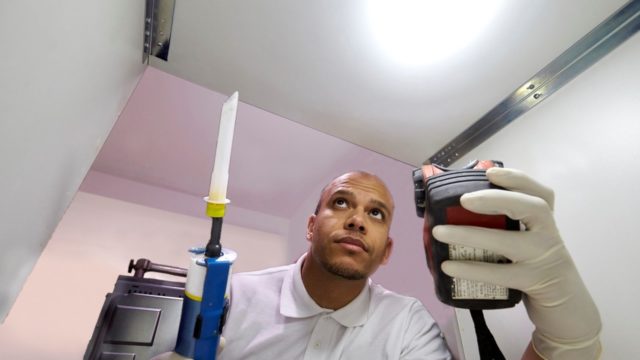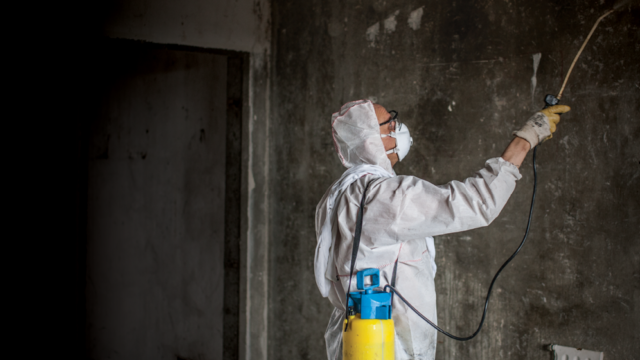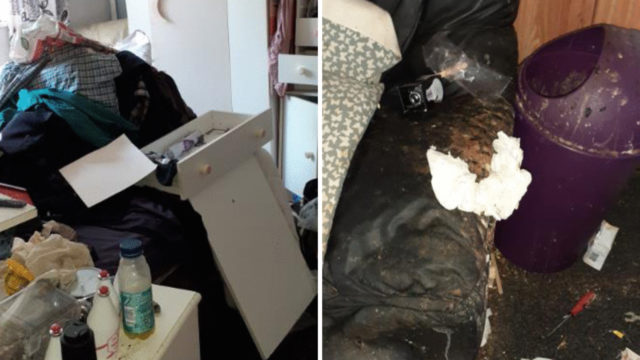Insurers have praised CleanSafe Services for the response of its emergency flood damage cleaning teams after a water pipe burst and inundated homes with tens of thousands of gallons of water.
The water main, in south London, burst in the early hours of the morning over the Christmas period of 2016. Thousands of gallons of water rushed down a hill into a housing cul-de-sac.
What was particularly distressing for the many householders was that this was the third flooding incident to affect them in recent years. Just days before, they had received assurances that measures had been taken to prevent further flooding occurring.
CleanSafe Services, of the UK’s leading emergency cleaning specialists, was called in to carry out flooding damage cleaning and after flood building drying for the four worst-affected homes.
Flood recovery lessons
The project has highlighted six important crisis management lessons for companies and agencies commissioning flood recovery services, especially where members of the public have been affected:
- It is important to call in flood recovery specialists as soon as possible helps establish positive stakeholder relations
- Skilled and experienced emergency cleaning teams can play a crucial role in managing productive lines of communication between the agency and flood victims during the recovery process
- Sensitive and humane handling of the concerns of victims about their flood-damaged belongings is crucial
- Following flood waste disposal procedures is important to avoid causing further health and safety risks
- Working flexibly and sensitively ensures both human and technical priorities are set and achieved
- Effective flood damage recovery can take a long time, sometimes months rather than weeks.
Fast response to flood crisis
Within hours of the houses being inundated by the flood water, on that same morning, a CleanSafe Services team was at the location, beginning the recovery process.
Operations Manager Paul Griffiths said: “The water had reached half a metre up the inside walls of the houses. Most of it had been pumped out by the time we arrived.
“But there was still standing water in the four houses. It had picked up silt and debris on its way down the hill, which formed a layer of sludge in the gardens and in the properties.
“Some of the householders were in a state of shock and very upset. But they were pleased to see us. I think we calmed the situation because it was clear we knew what we were doing, and we were there to help.”
Initial phase – removing flood water and waste
The first task was to restore electrical power. The CleanSafe team could then begin removing the remaining water and the mud and sludge, some of which could have contained sewage from foul drains that had been filled with the water and rapidly overflowed.
A team of eight CleanSafe flood damage cleaning personnel used wet vac machines, mops, squeegees, and shovels to scoop up the water.
In an operation that lasted four days, they also began to dispose of the household belongings that had been damaged beyond repair by the flood water.
Paul Griffiths said: “We worked with the insurance company and its loss adjuster to identify what was flood damaged and had to be disposed of, taking pictures of everything, as evidence.
“It was also important that everything designed as flood waste had to be destroyed, so if items were intact we had to break them before putting them into a skip.”
This was important to discourage salvagers from taking away items. Flood-damaged electrical goods may still work. But internal electrical damage can make them prone to catching fire, so they are a serious health and safety risk.
Supporting flood victims
Sometimes it is the smallest items with the least monetary value that cause the greatest upset. One of the victims had kept many of her children’s belongings, which had been damaged in the flood.
Paul Griffiths explained: “The family was trying to get her to dispose of these items, when she got very upset and started shaking. We called an ambulance and she had to spend the night in hospital.
“She returned the next day and was grateful that we were there to help. Calmness, patience, and understanding the psychological trauma that people are going through are all part of our service.”
The CleanSafe Services flood cleaning team lifted and disposed of flooring, removed flood-damaged plaster from walls, and electrical fittings.
It has a sister company, WasteSafe Services, which made the task of clearing flood waste material faster and more efficient.
They also cleared debris from eight garages. The work had not been part of the original job specification. But, nearby residents also affected by the crisis asked for help with cleaning the garages.
An important aspect of flood recovery work is to be prepared to do what is necessary, not just what is on the job sheet. It is an example of how CleanSafe Services acts as a trusted advisor to insurers and loss adjusters, to prioritise tasks, and maintain goodwill with flood victims.
Final phase – building drying
The final phase of the flood recovery process has been to dry the buildings. De-humidifiers and air moving machines were installed in all the houses, then monitored and control over a number of weeks to optimise the drying process.
Paul Griffiths explained: “Drying times depend on the type of building, the extent of flooding, the depth to which water has penetrated the fabric of the building, and atmospheric conditions.
“In this case, the weather was very cold for a period after the flood which extended the drying time. In one house, the drying process is on-going because it has remained empty, so we want to keep the air moving to prevent it from becoming stale.”
Impressed by flood recovery service
Feedback from householders about CleanSafe Services’ work has been very positive. The insurer and its clients has also been impressed. Effective flood damage recovery is about good crisis management as well as the technical task of cleaning and drying a building.
Understanding and supporting people who have been traumatised by the experience is a vital part of the process, and why turning to flood recovery experts like CleanSafe Services, is a vital first step.





